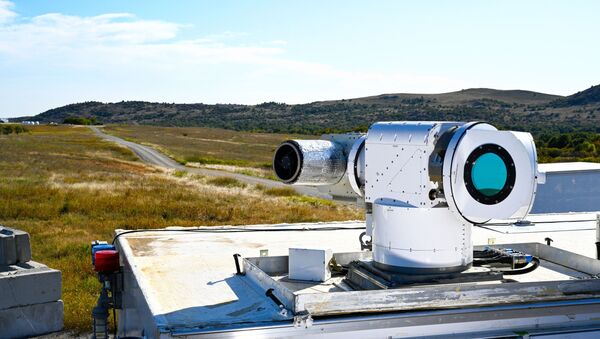On Tuesday, Under Secretary of Defense for Acquisition and Sustainment Ellen Lord told reporters that following her tour of US forces in several Middle Eastern countries, she has concluded the Pentagon needs “to continue to focus heavily on counter-UAS [unmanned aircraft system] systems and strategies.”
"This remains a top priority for the department, and I will continue to engage with Congress and the defense industry on ways ahead,” she continued.
“We have had each of the services and a number of agencies over the last few years, focused on trying to come up with systems to combat this,” Lord said. “What we in the department have done, and what I talked to everyone downrange about, is the fact that we’re coalescing these efforts to try to be efficient and effective.”
In September, US-built Patriot air defense systems failed to down a coordinated drone attack on two Saudi Aramco petroleum facilities in eastern Saudi Arabia, resulting in a catastrophic fire that temporarily crunched world oil supplies. While the Yemeni Houthi movement, at war with Riyadh, has claimed responsibility for the attack, US intelligence has pointed the finger at Iran, Saudi Arabia’s primary regional rival.
As Sputnik reported, decades of considering primarily strategic air defense against nuclear attack have left the US military bereft of short-range air defense systems, forcing it to consider stopgap measures like Raytheon’s Coyote loitering munition - a suicidal “kamikaze drone” - to protect its installations.
The Pentagon’s present anti-drone staple is the DroneDefender, built by Battelle but recently purchased by Dedrone, a company that specializes in airspace denial to unmanned aerial vehicles. The system is held and pointed just like a rifle, but instead of shooting down the unwanted drone, it disrupts the intruding drone’s GPS and control signals, causing it to crash.
However, DroneDefender only has a range of several hundred meters, and its use is dependent on detection of the drone - something that can be even more difficult than downing it once it’s spotted.
Some other options include the Silent Archer system, for which the Army penned a $108 million contract in January. Built by the firm SRC, the system includes radar, electronic warfare systems, a camera and 3D user display, Army-Technology reported at the time.
Defense contractor Lockheed Martin also tested its Advanced Test High Energy Asset (ATHENA) prototype laser system for downing drones in a simulated combat environment, Sputnik reported last month. The swivel-mounted system provided “full kill-chain performance” by taking down “multiple fixed-wing and rotary drones” at a test range at Fort Sill in Oklahoma.
"My goal is to make sure we have three to five systems that are tailored to a series of different types of threats and that we can get the economy of scale of having a few best systems out there," Lord said Tuesday.
Military.com noted that Texas A&M University cosponsored a Drone Venture Day last month with the Defense Department, during which more than three dozen producers of counter-drone systems discussed potential partnerships with “trusted capital providers” to meet the Pentagon’s needs.

